Expansive/Swelling Soils
Expansive soils exhibit significant volume changes with soil moisture variation. Such soils swell and stick when moisture increases and shrink when moisture decreases developing wide cracks or a puffy appearance.
Field Observations
1. Black or Blackish Gray or Grayish Brown Color
2. Soil is hard when dry, but soft and sticky when wet
3. Wide surface cracks
Basic Laboratory Data (High Swell Potential)
Liquid Limit > 50%
Plasticity Index > 25%
Shrinkage Limit <10%
Swell Potential > 6%
Identification through Swell Tests
Swell Potential and Swell Pressure are the two important parameters that are determined through swell tests.
The swelling potential is the percentage of the swell of a laterally confined sample on soaking under 6.9 kPa (1 psi) surcharge, after being compacted to the maximum density at optimum water content in the standard AASHTO compaction test. (Seed, et. al. 1962)
Swell potential can also be defined as the equilibrium vertical volume change from an oedometer-type test with lateral confinement, expressed as a per cent of the original height of a disturbed soil specimen from its natural moisture content and density to a state of saturation under an applied surcharge load or a load equivalent to the in-situ overburden pressure (Snethen, 1984).
When an expansive soil imbibes water from outside, pressure builds up inside the soil. If free swelling of the soil is restrained by the placement of a structure over the soil, this pressure, called the swelling pressure, is exerted by the soil on the overlying structure.
The force required to prevent expansion in the soil is a function of time, but a maximum value is reached after a certain period of time. Swelling pressure can be defined as the maximum force per unit area that needs to be placed over a swelling soil to prevent volume increase (when soil specimen is subjected to moisture increase).
The swell pressure can also be defined as the applied pressure at which the void ratio is equal to the initial void ratio.
Swelling pressure is a very useful index of the troubling potential of expansive soil. A swelling pressure less than about 20 kN/m² may not be regarded as of much consequence (Erzin and Erol, 2004).
The rate of swelling is important because it governs how fast water will enter the soil and cause foundation heave. Permeability is an important factor because the higher the permeability, the greater the probability of differential movement of the foundation.
This is because the water could quickly penetrate underneath one portion of the structure resulting in damaging differential movement. Slower moisture mitigation into the soil could result in a more gradual and uniform foundation heave (Du Y., et. al, 1999).
The use of the oedometer has distinct advantages due to familiarity amongst geotechnical engineers.
Tests can be conducted as free swell tests where swelling is allowed to occur at a predetermined pressure after water is added. The swell pressure is then defined as the pressure required to re-compress the swollen sample to its pre-swelling volume. A typical graphical illustration of this test is shown in Figure 2.10.
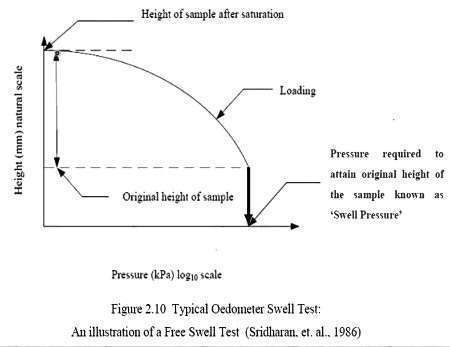
An alternative approach is known as the constant volume swell test which involves inundating a sample placed in the oedometer and preventing it from swelling during the test.
In this test, the swell pressure is then the maximum applied pressure required to achieve a constant volume (Sridharan et. al., 1986). A typical graphical illustration of this test is shown in Figure 2.11 (After getting swell pressure, this test may be continued to conduct consolidation test by applying further loading).
The constant volume test is more vulnerable to sample disturbance. In this way, the free swell test is better because it simulates the actual undisturbed sample condition (Sridharan et. al., 1986).
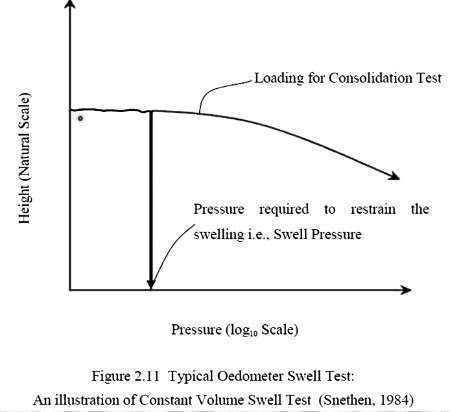
Swell Tests
Both swell potential and swell pressure tests come under this heading because these are the two parameters that are used to evaluate the swelling of the soils.
A) Swell Potential Test
For this purpose methodology of ASTM D, 4546 is adopted. Per cent swell of the soil sample is determined through this test under a standard surcharge pressure of 6.9 kPa (1 psi).
The soil swell potential is defined as the percentage escalation in the original height of the soil sample upon imbibing moisture. Figure 3.6 represents the procedure that is adopted in order to evaluate the soil swell potential.

The percentage swell can be calculated by dividing the amount of swell by the original thickness of the sample expressed as a percentage.
Mathematically
% Swell = [Δh/h] 100
where
h = Original height of soil sample
Δh Change in height of soil sample upon imbibing moisture
The procedure of the test is as follows; first, the specimen is placed in the oedometer ring which was positioned in consolidometer under a seating load of 6.9 kPa after placing dry filter papers on the upper and lower sides of the soil sample. When the oedometer is fixed on the loading platform, the deformation dial gauge is set.
The sample is inundated with water by directly adding moisture from the oedometer top. The sample starts swelling from this instant and regular observations are noted generally at 1, 2, 4, 8, 15, 60, 120, 240, 480, 960 minutes and so on till the dial gauge shows constant value over a significant period of time. Then the test is deemed complete and the final reading is noted. This value is used to determine the swell potential.
B) Swell Pressure Test
Swelling pressure is defined as the pressure required to prevent the swelling of the soil. It may also be defined as the pressure required to bring the swollen soil sample back to its original height or void ratio.
There are two different methods that are generally used to determine swell pressure.
In method I
(Free Swell Test: refer to Figures 2.10 and 3.7), the sample is allowed to swell under a surcharge pressure of 6.9 kPa on the addition of water and then loaded to its original height. The load added to bring the specimen to its original height divided by the area of cross-section of the specimen is called swelling pressure.
In method II (Constant Volume Test: refer to Figure 2.11), upon the addition of water to the oedometer ring, the sample receives water and begins to swell. Then the sample is loaded continuously to maintain its original height. This process is maintained till there is no need to put more load to maintain the height of the specimen.
Method I,
has the advantage of getting the per cent swell (swell potential) under nominal surcharge pressure and the swelling pressure too. This test also accommodates the effect of sample disturbance and thus has an additional advantage on Method II (Sridharan, 2004).
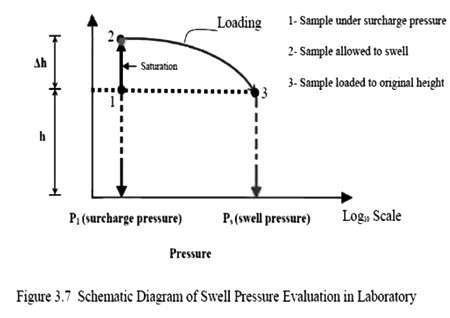
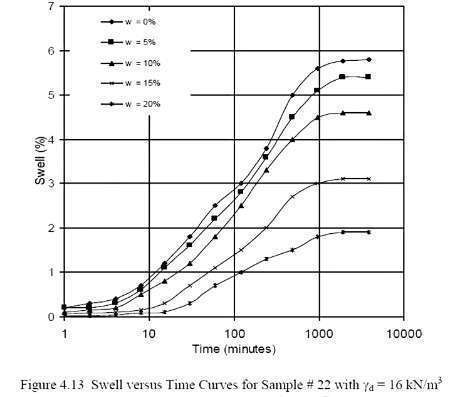
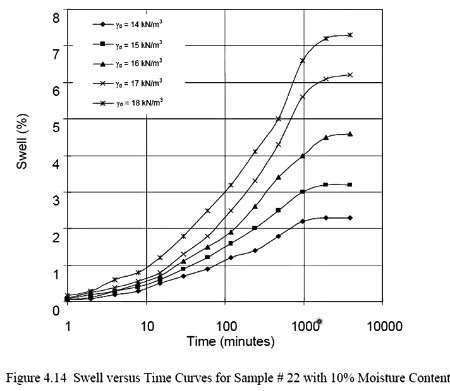

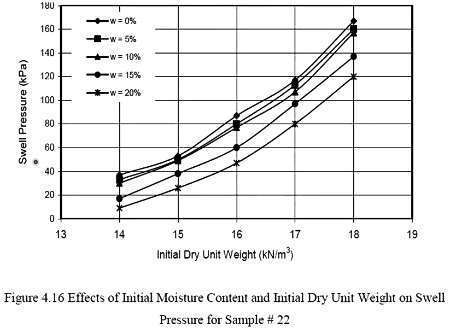
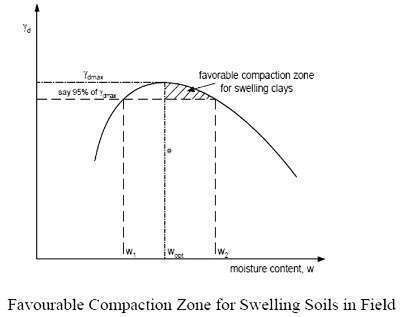
Criteria for classification of expensive soil
| Expansion Potential | Very low | Low | Medium or moderate | High | Very high or critical |
| Liquid limit (LL) | 0-20 | 20-35 | 35-50 | 50-70 | 70-90 |
| Plasticity Index (PI) | 0-10 | 10-15 | 15-25 | 25-35 | >35 |
| Expansion Index (EI) | 0-20 | 21-50 | 51-90 | 91-130 | >130 |
| %Swell at 0°v =6.9KPa | – | 0-2 | 2-6 | 6-10 | >10 |
I hope this article remains helpful for you.
Happy Learning – Civil Concept
Read Also,
Consolidation of soil | 2 Stages of Consolidation of soil with Test
How to perform Vane shear test to test Strength of Soil at the Site?
Relative density of soil test- Formula, Procedure, and Calculation
10 types of soil tests for construction- Importance, Procedure, Calculation